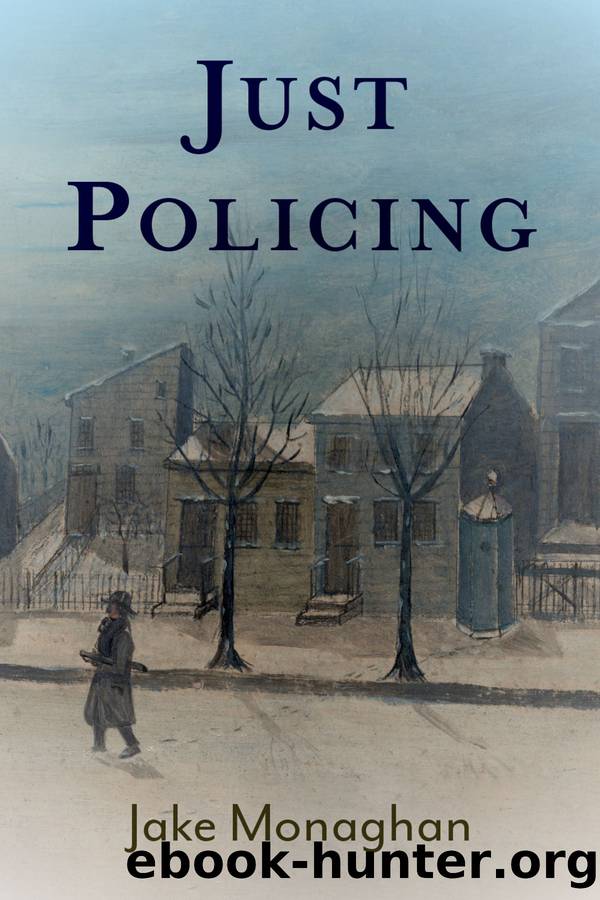Just Policing by Jake Monaghan

Author:Jake Monaghan
Language: eng
Format: epub
Publisher: Oxford University Press
Published: 2023-08-15T00:00:00+00:00
5.3.2. Induced Speeding
Counterproductive enforcement is unjust because it is ineffective and lacks a reasonable chance of success, usually while burdening bystanders. It also introduces the complication of state-generated âthreatsâ or violations. We noted above that policing sex work sometimes has the effect of making it worse, for example, by making it more harmful or a greater nuisance. In those cases, the state has contributed to the violation it then forcefully polices. When the state is integral in causing some violation, the burdens associated with policing it are less likely to be fitting.
Perhaps a less controversial example can be found in traffic enforcement. Speed limits are intentionally set in such a way that some motorists will routinely violate the law. This is the â85th percentile ruleâ (Taylor and Hwang 2020). Often, these speeders are dangerous, and their behavior should be deterred. But in other cases, speed limits are artificially low. When a road is designed with wide lanes, sweeping curves, concrete barriers between travel lanes, and nothing placed near the side of the road to narrow a motoristâs field of vision, driving fast is nearly irresistible. These conditions induce violations of the law.
In 2015, a motorist traveling on a short stretch of highway with these characteristics that runs through Delaware Park in Buffalo, New York, fell asleep and crashed into a mother and her two children who were walking in the park. One of the children, a three-year-old boy, was killed (Epstein and Popiolkowski 2020). There was plenty of blame to go around; policymakers foolishly put the highway through the cityâs major park, and then negligently decided not to install barriers between the highway and the rest of the park, and the motorist couldnât manage to control his vehicle. In response, the Department of Transportation erected barriers and reduced the speed limit from 50 to 35 mph, a speed appropriate for a boulevard that bisects a public park. But they didnât do anything else to turn that road into a boulevard.
The new barriers encouraged speeding, as did the wide lanes, wide field of vision, and so on. From that point on, speeding was induced, or systematically encouraged, by the combination of the infrastructure and the speed limit that did not match it. And people responded predictably by routinely speeding around 20 mph over the limit. While the accident was tragic, speeding on that highway is hardly blameworthy, given that it is systematically encouraged and (now) poses only a small risk to bystanders.
It would be unjust to set up a âspeed trapâ on that section of highway. Doing so would not improve public safety much. Beyond the efficacy requirement, the standard punishment for speeding does not fit the behavior, even if the law regards reckless speeding and induced speeding as violations all the same. Officers policing the highway therefore have strong reason not to make traffic stops for speeding in that area unless a motorist was substantially exceeding the original speed limit. To do otherwise would typically be unjust, even though the Buffalo Police Department played no role in encouraging the illegal activity.
Download
This site does not store any files on its server. We only index and link to content provided by other sites. Please contact the content providers to delete copyright contents if any and email us, we'll remove relevant links or contents immediately.
Phoenicians among Others: Why Migrants Mattered in the Ancient Mediterranean by Denise Demetriou(575)
Verus Israel: Study of the Relations Between Christians and Jews in the Roman Empire, AD 135-425 by Marcel Simon(575)
Caesar Rules: The Emperor in the Changing Roman World (c. 50 BC â AD 565) by Olivier Hekster(557)
Europe, Strategy and Armed Forces by Sven Biscop Jo Coelmont(504)
american english file 1 student book 3rd edition by Unknown(474)
Give Me Liberty, Seventh Edition by Foner Eric & DuVal Kathleen & McGirr Lisa(469)
Banned in the U.S.A. : A Reference Guide to Book Censorship in Schools and Public Libraries by Herbert N. Foerstel(467)
The Roman World 44 BC-AD 180 by Martin Goodman(457)
Reading Colonial Japan by Mason Michele;Lee Helen;(457)
Basic japanese A grammar and workbook by Unknown(453)
DS001-THE MAN OF BRONZE by J.R.A(442)
The Dangerous Life and Ideas of Diogenes the Cynic by Jean-Manuel Roubineau(437)
Introducing Christian Ethics by Samuel Wells and Ben Quash with Rebekah Eklund(433)
Imperial Rome AD 193 - 284 by Ando Clifford(431)
The Oxford History of World War II by Richard Overy(431)
Literary Mathematics by Michael Gavin;(392)
Language Hacking Mandarin by Benny Lewis & Dr. Licheng Gu(379)
Catiline by Henrik Ibsen--Delphi Classics (Illustrated) by Henrik Ibsen(367)
How to Reach the 9.0 in IELTS Academic Reading by IELTS Medical(357)
